Welcome to Home Appliance Review: our IQAir HealthPro Plus review article. This unit is about 28 inches tall; it’s actually one of the tallest air purifiers we’ve tested. It’s about 15 inches wide and about 16 inches deep. This unit weighs about 35 pounds, it’s definitely one of the heavier air purifiers we’ve tested as well.
IQAir HealthPro Plus Overview

This unit features three different filters: there’s a pre-filter, a gas and odor filter, and also a HEPA filter (a particle filter). Three different filters. The air enters the air purifier through the bottom here on both sides. There’s a front arch and a back arch here, the air enters through the bottom of the unit here. It goes through the pre-filter, then travels up past the fan. The fan sits between the pre-filter and the gas and odor filter, which is the next filter up here.
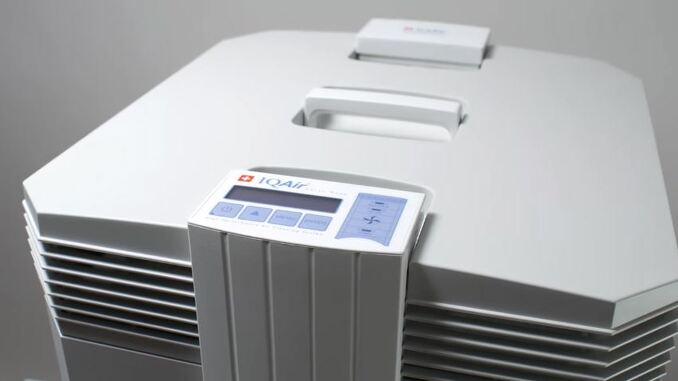
The air travels through the bottom gaps here, up through the pre-filter, past the fan, past the gas and odor filter, past the particle filter (which is the HEPA filter), up and out through the diffuser up here. The last filters up here, the air goes past there and then it travels on all sides here through this top diffuser. There’s actually nothing above here; there’s no way for the air to come out straight up top like a lot of other air purifiers in the market. The air comes out through the sides here on this top diffuser.
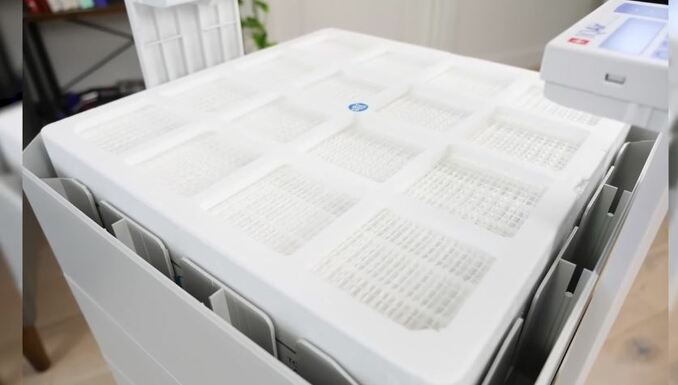
Three filters that are there – again, there’s a pre-filter. The filter here is called the pre-max filter, and this is a large particle pre-filter. The intention here is that larger particles are going to run into that pre-filter on the bottom here, and they’re going to saturate that pre-filter instead of the filters that are up top. Next up is the gas and odor filter. A specific name here is the V5 Cell. The V5 Cell sits up top here, above the fan but below the particle filter. That V5 Cell contains about five pounds of activated carbon and alumina, and that combination of compounds is intended for gas filtration – unwanted gas and odor filtration.
Finally, there is the particle filter that sits above the gas and odor filter. That is called a HyperHEPA filter; that is the specific name given to that filter by the manufacturer. It is the HyperHEPA filter, and again, that sits on top of the gas and odor filter. It is essentially a HEPA filter. Visually, it is much thicker than most of their HEPA filters on the market. There’s a lot more filter media there than most of their air purifiers in the market have with their HEPA filters.

However, it is still a HEPA filter, despite the HyperHEPA moniker. The manufacturer-specified efficiency of that HyperHEPA filter is 99.97% for particles 0.3 microns and larger. That is exactly the same efficiency as any other true HEPA filter on the market. Keep that in mind. Despite the name HyperHEPA, despite any other manufacturer claims that may come into play here, that is essentially a true HEPA filter up, and it is a true HEPA filter, much the same as many other HEPA filters on the market in terms of overall efficiency in capturing particles 0.3 microns and larger.

In maximum fan speed – and this unit does have six fan speeds, one, two, three, four, five, six that you select on the control panel there – on maximum fan speed of six, the unit does output at around 300 CFM. You do get a substantial output there on the maximum fan speed. The unit that we have on this review article today, the HealthPro Plus specifically, it retails for about $900 at most retail outlets.
What do we like
What do we like about the HealthPro Plus, this IQAir model we have today? We definitely like its substantial output.
Hight output/CFM
The output there is 300 CFM. That is a substantial amount of air that the unit is able to process every minute that goes by. Three hundred cubic feet of air is pulled into this unit, passed all the filters (and these are thick, substantial filters), it’s pulled in past those filters, up and out of the unit up top. 300 CFM is about 50 CFM more than what we see on top-rated units that we recommend to most consumers. You do get a little bit extra CFM here with this IQAir HealthPro Plus, and that is definitely a strong positive for the unit, its substantial output, its substantial air processing power.

Filters
We also like the high-quality, substantial filters that are installed on this unit. Again, the pre-filter down here is going to take care of all of the larger particles. It’s going to be the first line of defense for the rest of the filters here. The gas and odor filter up top here contains five pounds of activated carbon and alumina. For comparison, most of their air purifiers on the market have one pound or less of activated carbon and only activated carbon.
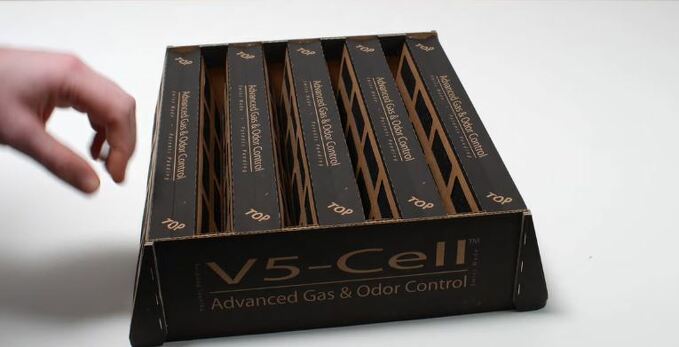
The addition of activated alumina, the fact that this unit does have five times as much gas filtration media than most of the units on the market does allow this unit to be a much better air purifier for gas filtration than most of their air purifiers on the market. With that four to five times more gas filtration media, and they’re at a minimum with this unit compared to most of their air purifiers on the market, the gas filtration media is going to be able to capture unwanted gases at a rate that is four to five times greater than most of their purifiers on the market.
For any given quantity of air that moves through the unit, that contains some concentration of unwanted gases, that concentration is going to be reduced by a factor of four to five at a minimum moving through this filter, as compared to other activated carbon filters on the market. Definitely a strong positive with that activated carbon and activated alumina filter in the middle here.
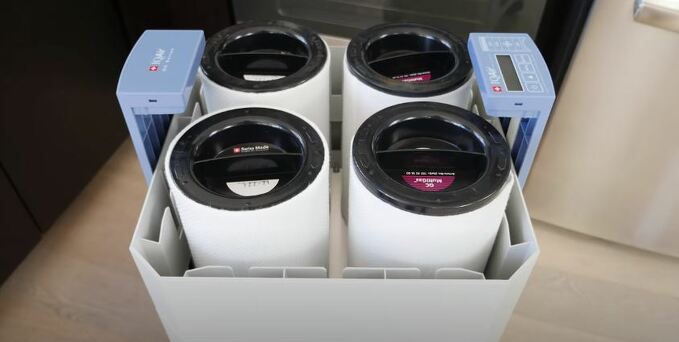
Finally, the HyperHEPA filter that is up top here, again, it is a true HEPA filter just like every other true HEPA filter on the market. However, there is a lot of filter media, and that filter is going to take a lot longer to saturate than most other true HEPA filters on the market. A strong positive there all around with all three filters here, in terms of quality, in terms of quantity of filter media, you’re doing very well here with the IQAir HealthPro Plus.
Portability
Next, and this might surprise you for something that is a positive for the unit, but that is the unit’s portability. It is a positive for us. The unit does ship with four casters, four wheels, that you can install on the bottom of the unit. If you were to use this unit in a situation, in an application where you are moving it from room to room and all those rooms are on the same floor, you don’t even have to lift this unit off the ground. You can just push it along on those wheels.
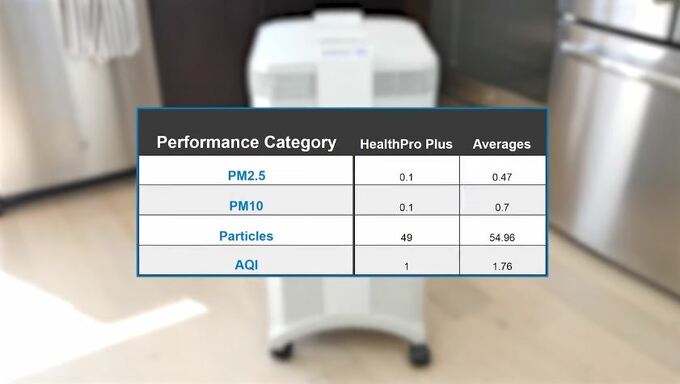
And in that type of application, this unit is even more portable than lighter units where you actually need to pick those units up. For portability, we give this unit strong marks, only because it comes with those caster wheels. And for many applications where you don’t need to necessarily pick it up and move it up a flight of stairs or something like that, in those applications, this unit can be quite portable.
10-year warranty
The final positive that we want to discuss for this unit is the 10-year warranty that it comes with. Now, you do need to register your purchase with IQAir to receive that full 10-year warranty. However, that warranty is available, and it is quite substantial. Most other air purifiers in the market have a warranty that extends to three years, to five years at a maximum.
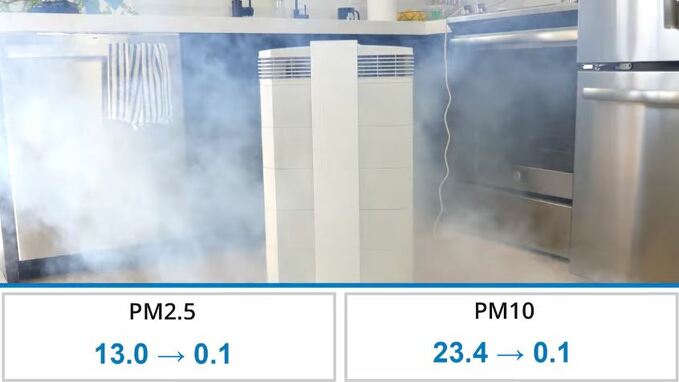
The 10-year warranty that comes with this unit is about double the next-best warranty length for other air purifiers on the market. If warranty is important to you, if you want to be sure that your purchase is going to last a long time and if it doesn’t last a long time that you can be covered by a true manufacturer’s warranty, the IQAir provides that in spades here with that full 10-year warranty on the unit.
What we don’t like
Price
Moving on to what we don’t like about this IQAir unit. First of all, we have to mention its price. This unit does retail for about $900. That is a substantial amount of money to spend on an air purifier, and regardless of whether that price can be justified or not, we definitely don’t like the fact that it is $900. We would like to see it at a lower price point if at all possible. And we do not like the $900. We feel like that puts it out of reach for a lot of potential consumers, and it does fall under the list of negatives for this unit.
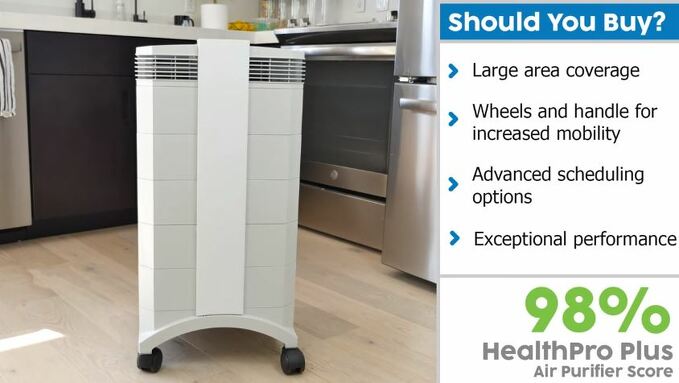
Energy efficiency
Another thing that we don’t like about the unit is its poor energy efficiency. Here must be said that remember, there are three very thick, very substantial filters involved here. All that air has to be pulled into the unit, has to be pushed past all three of those filters, and it takes energy to do that. At the end of the road here, when you get up top here to the diffuser and you have 300 CFM of output at that point, you need to pull quite a substantial amount of air through three very thick filters. Still, it must be said that on maximum fan speed, and that is at about 300 CFM, this unit draws over 200 watts of power.
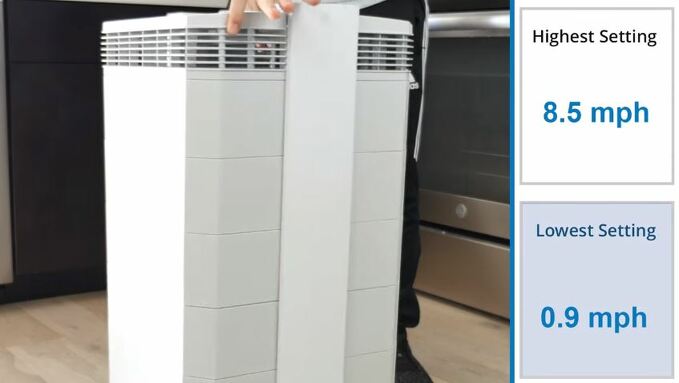
For comparison, top-rated units draw about 250 CFM, only about 50 CFM less, and they do that by drawing about 60-70 watts of power. You have well under 100 watts of power draw for units at 250 CFM, top-rated units, and this unit, only outputting about 50 CFM more, it draws well over 200 watts of power. Energy efficiency is definitely not a strong point with this IQAir air purifier.
High noise output
Finally, the last negative we will discuss here is the fact that this unit can get quite noisy on that maximum setting. On lower fan speeds, it does quite well in terms of noise output. However, if you do run it on that maximum fan speed, be aware that the unit does get very loud. It is, in fact, one of the loudest air purifiers we’ve tested on maximum fan speed. As you move up with fan speeds, the unit has a gradual curve in increased noise.
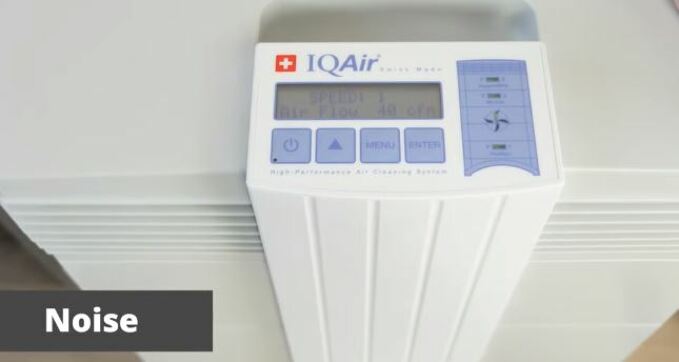
However, on that maximum setting specifically, it’s almost like the unit hits an extra gear of noise output, and it really almost feels like it’s struggling to push all of that air through this top diffuser. It almost sounds like there’s a different pitch of noise there, and the air is just really blowing out of there at a very high velocity through these grates up top here. Be aware that on maximum fan speed, if you do want to run this unit at 300 CFM on maximum fan speed, the unit is quite loud.
Recommendations
What is our bottom line recommendation when it comes to this unit? How would we compare it to other air purifiers on the market? And here, things are a little bit difficult just because there are not that many other air purifiers at this price point. We have to kind of be a little bit creative to compare this unit to what you would consider a comparable unit.
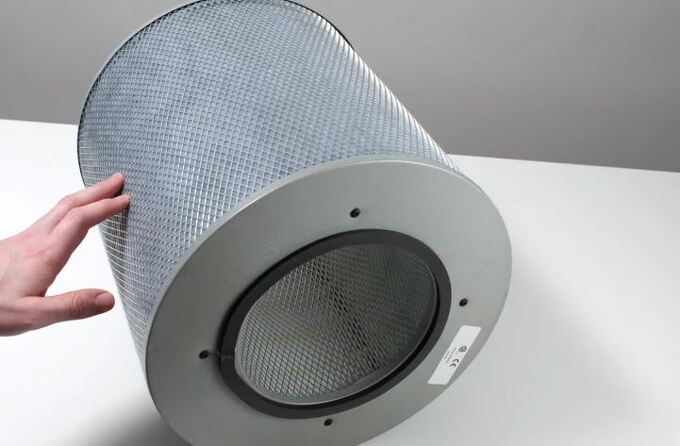
As we mentioned earlier, one of the very strong positives here for this unit is its gas filtration for unwanted gases, for VOCs, for odors. This unit does come equipped with that gas filter that contains five pounds of activated carbon and alumina. Another air purifier on the market that also does very well with gas filtration is the Austin HealthMate. And that is really the unit that we can use to best compare this unit to other units on the market.
Austin HealthMate
The Austin HealthMate retails for about $500-$600, it is substantially less expensive than the IQAir HealthPro Plus here. The HealthMate does output at a slightly lower rate; it outputs at about 250 CFM compared to the 300 CFM on the IQAir. But the more important distinction to make here is the fact that the HealthMate, its gas filter, contains about three times more gas filtration media than this IQAir. With the Austin HealthMate, you’re getting 15 pounds of activated carbon and zeolite compared to the 5 pounds of activated carbon and activated alumina with the IQAir. You’re getting three times as much gas filtration media. And again, the price is much less on the Austin HealthMate.
What does that three times as much gas filtration media mean? It means that the Austin’s filter is able to filter out unwanted gases, unwanted VOCs, and things of that nature; it’s able to filter out those unwanted gases three times faster than this IQAir can. That filter on the Austin is also going to saturate three times more slowly than this IQAir. In terms of gas filtration, how the filter does that is it actually bonds the carbon, the activated carbon, and other compounds in the gas filtration media. They actually bond to the molecules that you want to remove from the air. Let’s say there’s formaldehyde or a chemical like that, which you want to eliminate from the air. That formaldehyde has to bond to the gas filtration media for it to be removed. Over time, that gas filtration media saturates. When you have 15 pounds compared to five pounds of gas filtration media, that amount of media is going to saturate more slowly by a factor of three times compared to the gas filtration media in this IQAir.
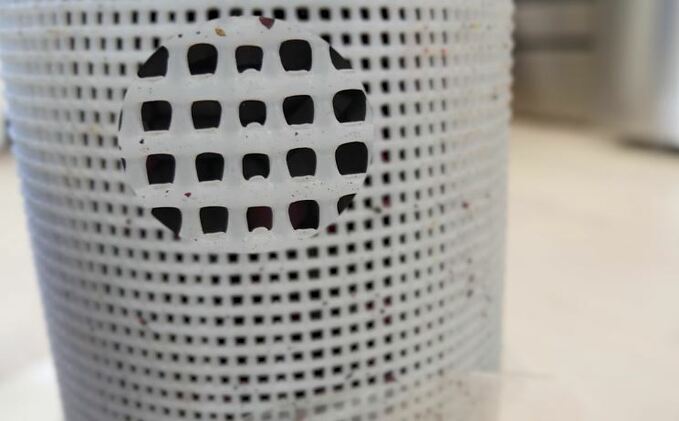
What is the bottom line here? Comparing the Austin air to the IQAir in terms of gas filtration, the Austin air performs much better. It has three times the gas filtration media. The IQAir’s greatest asset, the gas filter, is outdone by another filter in another air purifier that is much less expensive. Therefore, if you are at all concerned about gas filtration, especially if it’s a significant consideration, our recommendation would be the Austin Air HealthMate over the IQAir HealthPro Plus.
In terms of particle filtration, both the Austin air and the IQAir have a very similar quantity of HEPA filtration. They both have true HEPA filters. for particle filtration, you really have a tie between the two. If you are only looking for particle filtration, or if you’re primarily focused on particle filtration (such as for allergens, dust, mold spores, etc.), and you only want a little bit of gas filtration, then a top-rated 250 CFM unit—the units that we recommend as top-rated units—can be had for even less than the Austin Air. You’re talking about $150 to $200. Again, for gas filtration, you want to look at the Austin Air. For particle filtration with a little bit of gas filtration, you want to look at a top-rated unit. We’ll have links for all of those units and recommendations just below: